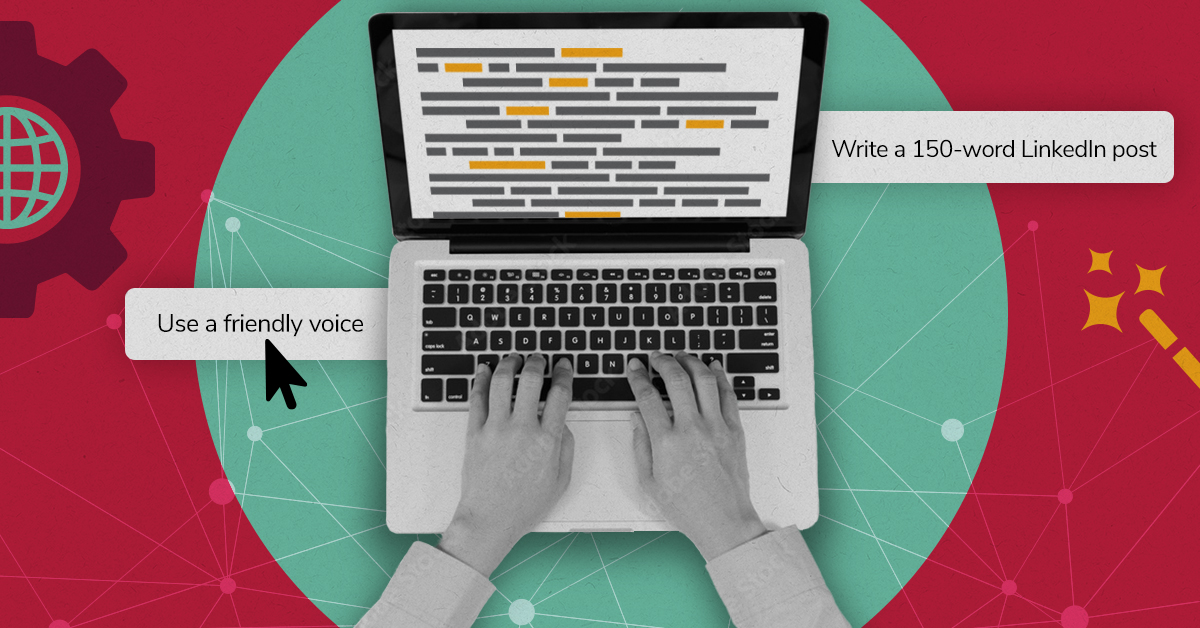Artificial Intelligence (AI). The sheer mention of it likely conjures myriad feelings: excitement, fear, confusion.
Large-language-model platforms like ChatGPT, DALL-E, and Bard have exploded on the scene over the past year, changing the landscape for businesses, marketers, and creators.
We tackled the topic of AI several months ago, and now we’re diving deeper to provide the insights you need to use generative AI efficiently, effectively, and ethically. See how you can employ prompt engineering to harness the power of AI and make your life easier, without losing your soul to a robot revolution.
What is Prompt Engineering?
When it comes to ChatGPT and similar generative AI models, the phrase “You get out what you put in” has never been truer. That brings us to the prompt. The prompt is what you enter to get a result from a generative AI tool. Simply put, the prompt is your ask.
Prompt engineering is the process of developing your ask to get the best possible creation. Crafting a strong input will generate an effective output from the generative AI platform.
Giving ample context, details, and direction is the difference between a useful response and a generic throwaway. Achieving success isn’t hard with the right foundation, so we built a framework to help you craft powerhouse prompts.
Prompt Preparation
Our prompt engineering framework is as easy as:
Position
Objective
Structure
Tone
POSITION
Describe who’s drafting the message. You’re putting the AI tool in your shoes, setting parameters, and establishing a level of expertise. Include keywords, phrases, and necessary language for the AI tool to better identify relevant content and provide substance that actually helps you.
OBJECTIVE
Specify the action you want from the AI tool and how you want it accomplished. Use specific verbs and provide details about the intended audience to give clear direction.
STRUCTURE
Provide specifics on length, format, and medium. Include any facts, figures, calls-to-action, and additional details to offer clarity. Reiterate the desired output. Bulleted lists work well for this.
TONE
It’s about what you say AND how you say it. Tell the AI tool what tone to use–whether that be formal, creative, or humorous–to infuse the appropriate feel and personality.
When you POST, you guarantee a substantive, clear, and effective output.
Rely on Refinement
You’ve engineered your prompt. You now have a result from the language model. Job’s done, right? Not yet. Keep the following in mind before using AI-generated content.
Revise. Revise. Revise. No matter how good the output, you need to edit, trim, and ensure the final messaging is clear, accurate, and easy to understand. Whatever you get from an AI tool is a first draft; it takes your or your team’s input to make it polished and final.
Make It Human
Start your messaging with a story and think fluidly about the idea of storytelling. Set a scene. Be descriptive. Put a reader in the action. You can direct the AI tool to do these things, but it’s up to you to use your discerning eye to put it in your own words and humanize the content.
Regardless of what AI tool you use, how you use it, or how effective your prompt, always remember this: AI is derivative. A human touch is not only nice but necessary to craft distinctive messaging that matters. AI-generated content comes across as just that — written by a bot. Revise and customize to connect with the reader in an authentic way.
Your Prompt Engineering Framework
Ready to dive deeper on messaging and substantive creation? Connect with us to discuss your goals and how we can help.


